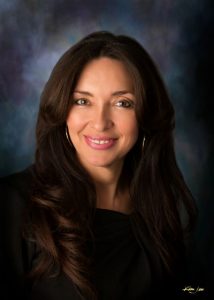 Klarissa Pena grew up in southwest Albuquerque, the original “Westside” and one of the first areas to be settled in Albuquerque. Growing up, she remembered there was very little development north of I-40. Then only a few neighborhoods, like Taylor Ranch and Paradise Hills, existed, but as people moved into the area north of I-40, it came to be seen as the Westside. Although much of Southwest Albuquerque predates the rest of the city, it historically has lacked basic infrastructure and continued to suffer as jobs and services moved elsewhere.
Klarissa Pena grew up in southwest Albuquerque, the original “Westside” and one of the first areas to be settled in Albuquerque. Growing up, she remembered there was very little development north of I-40. Then only a few neighborhoods, like Taylor Ranch and Paradise Hills, existed, but as people moved into the area north of I-40, it came to be seen as the Westside. Although much of Southwest Albuquerque predates the rest of the city, it historically has lacked basic infrastructure and continued to suffer as jobs and services moved elsewhere.
She remained in her neighborhood, married, had children, and as a parent, she became involved in the PTA, which evolved into membership and then leadership in community associations, evolving finally into the presidency of the South West Alliance of Neighbors, a coalition of 14 neighborhood associations committed to enhancing the community. Councilor Pena firmly believes that neighborhood associations, composed of citizens who advocate for their communities, have been crucial in the ongoing evolution of Southwest Albuquerque. They are the drivers of area economic development, in part because of their participation in the Albuquerque Neighborhood Recognition Program, which gives them legal standing and a voice with the city.
Development is coming to Southwest Albuquerque. The I-66 Visitor Center, which the community has advocated for since the 1990’s, has been funded and will be built on Central Avenue’s Nine-Mile Hill. The hill has a commanding view of the city, the Rio Grande Valley and the Sandias, thus it is a perfect place for tourists to be introduced to Albuquerque. The visitor center will be a place where tourists can stop and get an introduction to Albuquerque and its many attractions. They can then follow Central Avenue into the city and to those attractions, thereby increasing tourism in the city and bringing new businesses to the portion of Central Avenue in Southwest Albuquerque.
Councilor Pena is also happy about the new Amazon facility being built just north of I-40 at Atrisco Vista Boulevard. The facility will be completed in late 2021 and hire around 1000 people. There is a huge need to bring jobs to the westside in general and Southwest Albuquerque in particular. Most residents of Southwest Albuquerque leave the area to work. This leads to congestion morning and evening on the Rio Grande bridges and it is unlikely that congestion will be relieved by new bridges anytime soon. The answer is to bring jobs west of the river, bringing prosperity with them.
Southwest Albuquerque is trying to catch up. The area has suffered marginalization and lack of investment. More quality jobs and retail are needed. People living in Southwest Albuquerque basically have to leave to not only to work but to play and eat. The area has 10 square feet of retail per person versus an Albuquerque average of 40 square feet of retail per person.
The area also needs investment from the city. Construction of the Westgate Community Center began in mid-July but the area really needs another community center and more parks. Though lighting has been improved along roads in Southwest Albuquerque, some remain without lighting or are minimally lit, and there are intersections that need lights.
This is a community which has a long way to go but also has a strong sense of self and determination as demonstrated by the long-term and concentrated efforts of its residents through community associations.
Southwest Albuquerque is also a diverse community. In recognition of that fact and following the brutal death of George Floyd, Councilor Pena is introducing legislation in the City Council to deal with racial and social disparities throughout Albuquerque. As the legislation moves forward, she will welcome the help and input of all Westsiders on these important issues.
- First, Councilor Pena seeks to make the Community Policing Councils permanent. They were originally created by the Department of Justice-City of Albuquerque negotiated agreement which resulted in DOJ oversight of city policing. The Community Policing Councils, established in all six command areas of the Albuquerque Police Department, are not currently permanent but have facilitated communication between police and citizens.
- A second bill directs the city to identify policies and strategies to promote diversity on City Boards and Commissions.
- Co-sponsored by Councilors Cynthia Borrego and Diane Gibson, a third bill directs the city to collaborate with partners in the Albuquerque community to support more employment opportunities for persons with disabilities.
- In a fourth bill, Councilor Pena seeks to prioritize funding for improvements in neighborhoods and communities intentionally left behind in order eliminate the inequities they have experienced.
- Another bill directs the City to complete community input and develop recommendations for the future of the La Jornada art installation
- Finally, with Councilors Cynthia Borrego and Lan Sena, Councilor Pena wants to strengthen Albuquerque’s commitment to addressing racial and social inequity by setting goals for City departments to achieve in several areas, including support of businesses owned by people of color and workforce development for youth of color.
